
Xanthidae is a family of crabs known as gorilla crabs, mud crabs, pebble crabs or rubble crabs. Xanthid crabs are often brightly coloured and are highly poisonous, containing toxins which are not destroyed by cooking and for which no antidote is known. The toxins are similar to the tetrodotoxin and saxitoxin produced by puffer fish, and may be produced by bacteria in the genus Vibrio living in symbiosis with the crabs, mostly V. alginolyticus and V. parahaemolyticus.

Pinnotheres is a genus of crabs, including the pea crab. Many species formerly in Pinnotheres have been placed in new genera, such as Zaops ostreus, the oyster crab and Nepinnotheres novaezelandiae, the New Zealand pea crab. The species currently recognised in the genus Pinnotheres are:

Majidae is a family of crabs, comprising around 200 marine species inside 52 genera, with a carapace that is longer than it is broad, and which forms a point at the front. The legs can be very long in some species, leading to the name "spider crab". The exoskeleton is covered with bristles to which the crab attaches algae and other items to act as camouflage.
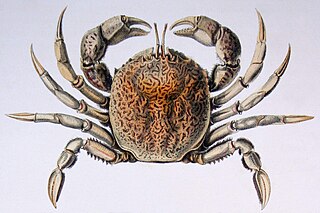
Belliidae is a family of crabs of the order Decapoda.

Pilumnoidea is a superfamily of crabs, whose members were previously included in the Xanthoidea. The three families are unified by the free articulation of all the segments of the male crab's abdomen and by the form of the gonopods. The earliest fossils assigned to this group are of Eocene age.

Macropodia is a genus of crabs, belonging to the family Inachidae. It contains the following species:

Panopeus is a genus of crabs, containing these extant species:

Pilodius is a genus of crabs in the family Xanthidae, containing the following species:

Medaeus is a genus of crabs in the family Xanthidae, containing the following species:
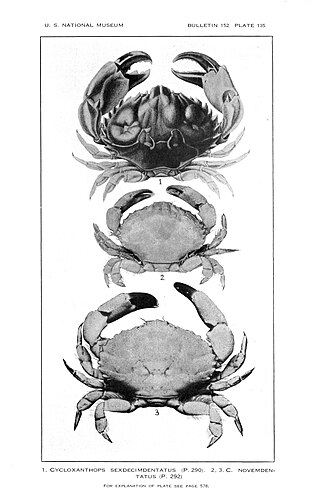
Cycloxanthops is a genus of crabs in the family Xanthidae, containing the following species:

Micropanope is a genus of crabs in the family Pseudorhombilidae, containing one exclusively fossil species and the following species:
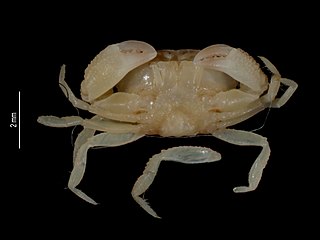
Nanocassiope is a genus of crabs in the family Xanthidae, containing the following species:

Xanthias is a genus of crabs in the family Xanthidae, containing two exclusively fossil species and the following extant species:
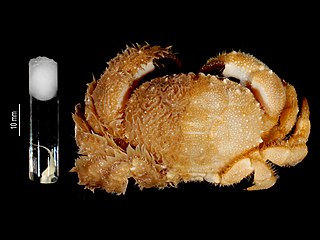
Banareia is a genus of crabs in the family Xanthidae, containing the following species:

Pilumnus is a genus of crabs, containing the following species:

Cyclograpsus is a genus of crabs, containing the following species:

Pisinae is a subfamily of crabs in the family Epialtidae, comprising the following genera:

The Panopeidae are a family containing 26 genera of morphologically similar crabs, often known as "mud crabs". Their centers of diversity are the Atlantic Ocean and eastern Pacific Ocean.
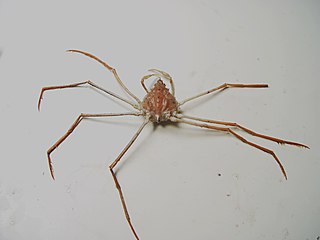
Inachoididae is a family of crabs originally erected by James Dwight Dana in 1852. It was not recognised as a valid family until the early 1980s. Its members closely resemble those of the family Inachidae, and the Inachoididae could be recognised as a subfamily of that family.

Anasimus is a genus of crab in the family Inachoididae, containing two species:


















